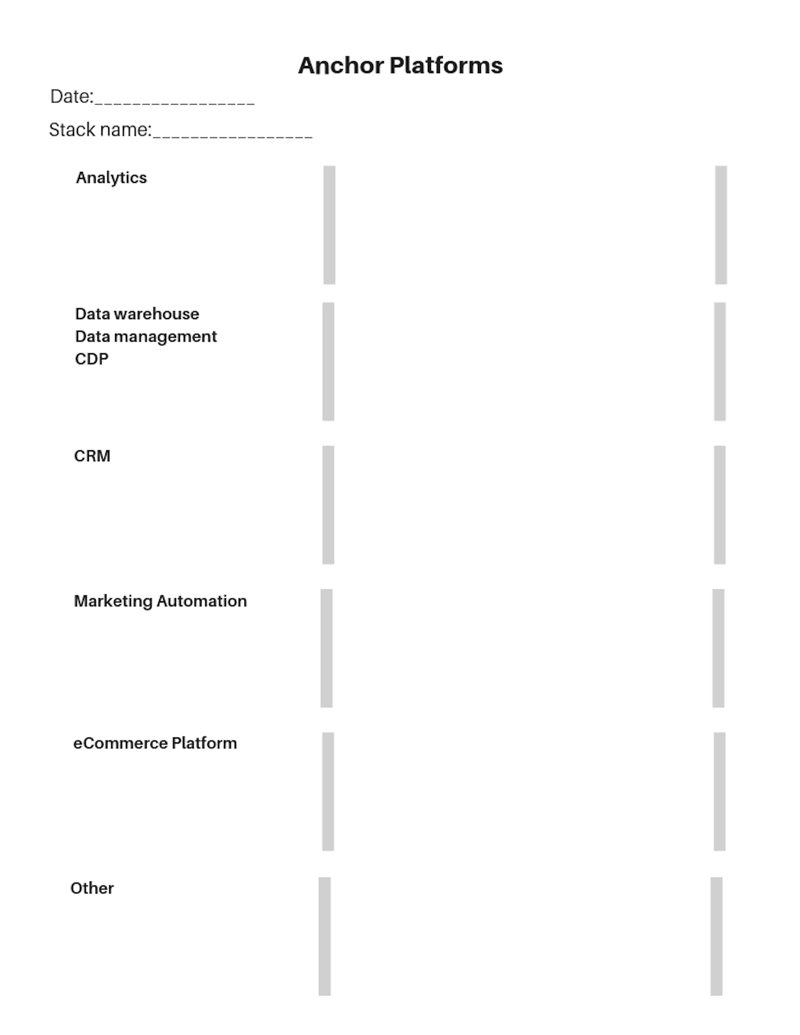At the core of every marketing stack is a suite of anchor platforms (sometimes referred to as systems of record) that are essential to your marketing and sales activities, and that provide the foundation for the rest of your marketing technology stack. These platforms are generally integrated with other elements of your stack.
Typically, these would include your:
These platforms generally require a significant financial and training investment.
Determining which set of anchor platforms is the right choice for your integrated stack is most likely to be the most challenging part of your integration process as it is likely that both companies will have already made large investments in these categories and may have a strong attachment to one or more of them.
Using your data architecture and flow requirements as a backdrop, start with any duplicate platforms. Are both of you using the same marketing automation platform for example? Assess whether those platforms:
If the answer is yes, then all that is needed for those products is to eliminate the duplication and to migrate users onto one platform. If the answer is no, this creates an opportunity to acquire a new, more appropriate platform when your contract for the existing one expires.
It gets more complicated when each company is using a different vendor in an anchor category. In this case, a decision will have to be made to select one, continue to use both (PLEASE NO, just NO!), or find a new alternative. This is when the technology requirements that you defined up front to support key marketing objectives are particularly useful. They take bias and ownership out of the decision. Assuming each platform measures up on the other platform requirements above, each platform should be assessed against its ability to meet the technology requirements that have been specified.
